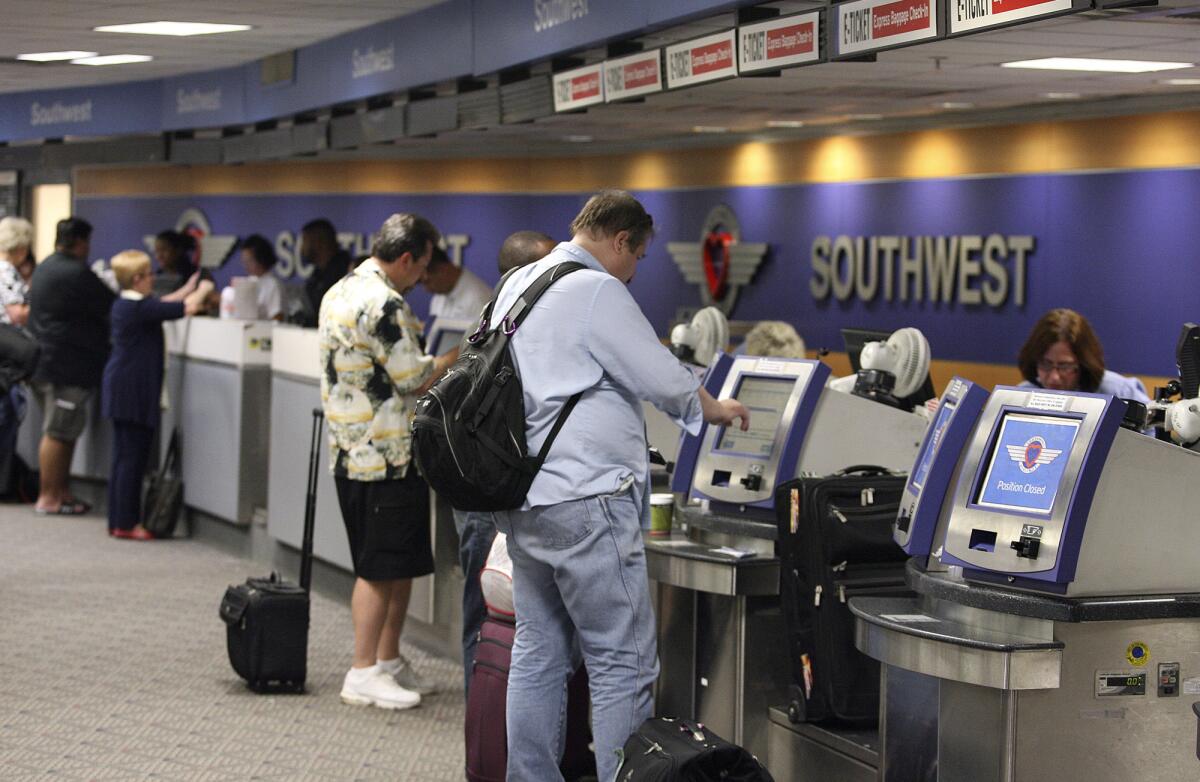Red ink flows at Bob Hope Airport

Halfway through its fiscal year, Bob Hope Airport’s operating revenues are running more than $150,000 in the red due to declining numbers of passengers and weak parking revenues, according to a recent financial report.
Parking fees, which make up about 40% of the airport’s revenues, were budgeted to bring in $9.5 million but only produced $8.9 million, according to the report released to the Burbank-Glendale-Pasadena Airport Authority on Monday.
Passenger levels for the first half of the fiscal year — July to December 2012 — declined almost 6.8% compared to the same period in the last fiscal year.
“At this time, we continue to be vulnerable to the economic uncertainty and the associated unfavorable impacts of the sluggish economy on passenger demand,” the report states.
But those aren’t the only challenges the airport faces.
In the past year or so, the airport also has seen the departure of American Airlines and it lost a pair of Jet Blue daytime flights.
And landing fees have come up short of budget projections by 5.2% so far this fiscal year.
Landing fees, which are calculated based on the weight of planes landing at the airport, were budgeted at almost $1.7 million, but brought in $1.6 million.
One reason for missing the projection is that airlines are flying smaller, lighter planes, said Kathy David, the airport’s deputy executive director of finance and administration.
Staff recommendations were to maintain current cost-reduction and revenue-enhancement efforts, and to leave airline fees and charges alone.
However, Airport Authority Commissioner Terry Tornek, representing Pasadena, said that the airport should evaluate whether it is undercharging airlines for operating at the airport.
“We are doing everything we can to keep costs down and be good scouts and make it plausible for them to operate,” Tornek said. “Sounds to me like we’re not necessarily getting the best bargain from the airlines in terms of what they’re doing.”
Tornek said that airlines charging significantly more for certain tickets out of Bob Hope than from Los Angeles International Airport – particularly to cities within a 500-mile radius of the airfield — might be contributing to the passenger decline.
“On a day trip to San Francisco … maybe you make the decision, ‘Maybe I really do have to drive to LAX because I’m going to save a substantial amount of money,’” Tornek said.
John Hatanaka, the airport’s senior deputy executive director, said the airport can only raise rental rates and fees on airlines if its revenues aren’t covering its expenses — and the airlines knew that might be a possibility soon.
In fact, the airport’s current fiscal budget, which took effect July 1, included a 21% hike in landing fees – the first increase in 10 years.
The report also included a glimmer of good news. The airport was recently approved for a Transportation Security Administration reimbursement program that could provide up to $100,000 to offset law enforcement costs this year, David said. The program could also provide up to $135,000 in reimbursements annually.
Areas performing above budget projections were facility rentals, which generated $193,703 more than expected, and concessions – rental cars, eateries, newsstands and advertising – which brought in $167,466 more than anticipated.
The airport also received an unexpected boon from its decision to allow filming by production companies on the grounds, which has generated $80,000 so far this fiscal year, David said.
RELATED
Passenger count in a tailspin at Bob Hope Airport
Bob Hope Airport unveils winning student artwork
--
Follow Daniel Siegal on Google+ and on Twitter: @Daniel_Siegal.